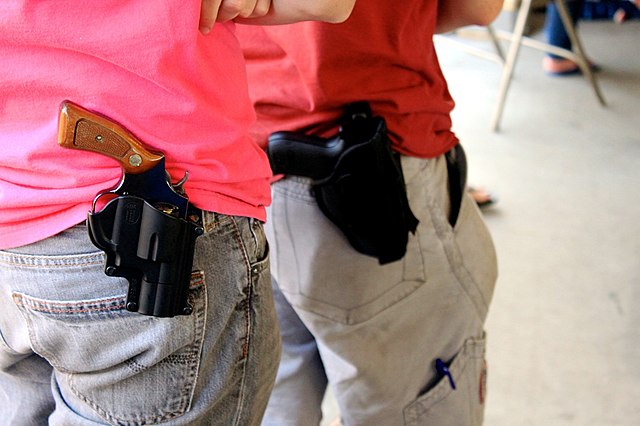Open carry in the United States
In the United States, open carry refers to the practice of visibly carrying a firearm in public places, as distinguished from concealed carry, where firearms cannot be seen by the casual observer. To "carry" in this context indicates that the firearm is kept readily accessible on the person, within a holster or attached to a sling. Carrying a firearm directly in the hands, particularly in a firing position or combat stance, is known as "brandishing" and may constitute a serious crime, but is not the mode of "carrying" discussed in this article.
Two persons openly carrying handguns in New Hampshire
Sign at a Walmart entrance asking patrons not to open carry
Black Panther Party members openly carrying firearms at the California State Capitol
Demonstrators at the 2020 VCDL Lobby Day gun rights rally in Virginia on January 20, 2020
A handgun holster is a device used to hold or restrict the undesired movement of a handgun, most commonly in a location where it can be easily withdrawn for immediate use. Holsters are often attached to a belt or waistband, but they may be attached to other locations of the body. Holsters vary in the degree to which they secure or protect the firearm. Some holsters for law enforcement officers have a strap over the top of the holster to make the handgun less likely to fall out of the holster or harder for another person to grab the gun. Some holsters have a flap over the top to protect the gun from the elements.
An H&K P7 pistol in a holster
16th-century pistol holster from Tbilisi, Georgia
A Taurus Millennium PT145 in a horsehide pocket holster
19th – early 20th century single-loop holster








